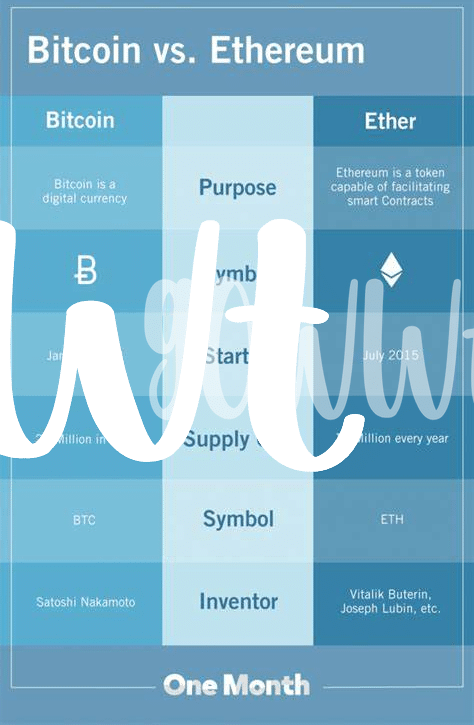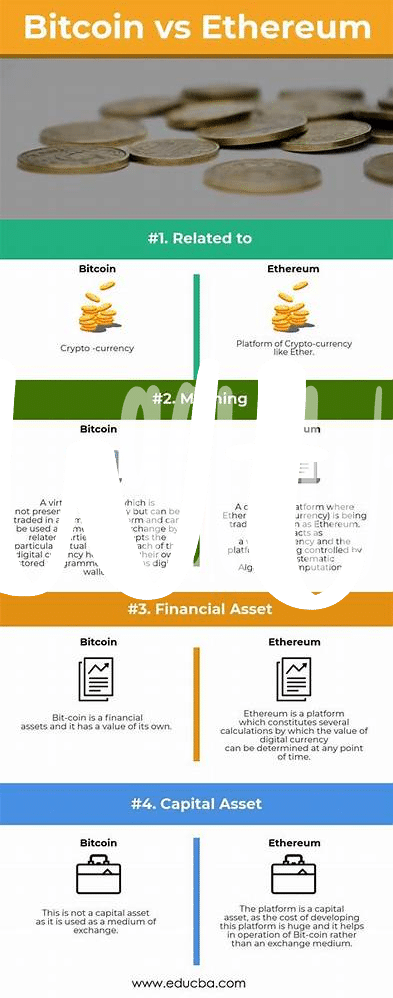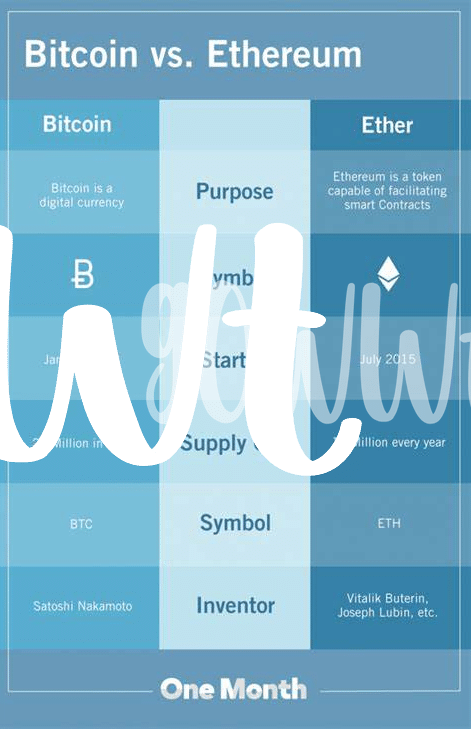The Humble Beginnings of Bitcoin and Ethereum 🌱

Once upon a time, in the vast digital universe, there were two stars waiting to be born: Bitcoin and Ethereum. Both embarked on their journey around the same time, with Bitcoin stepping into the limelight in 2009, created by a person or group of people under the pseudonym Satoshi Nakamoto. Its primary aim was to revolutionize the way we think about and use money, creating a system where financial transactions could happen directly between people, without the need for a middleman like a bank. Just a few years later, in 2015, Ethereum came into existence, thanks to a young visionary named Vitalik Buterin. While it shared Bitcoin’s dream of changing the financial world, Ethereum had a broader vision. It wasn’t just about the money; it was about building a platform where anyone could create their own decentralized applications.
The early days of Bitcoin and Ethereum were filled with curiosity and skepticism. There wasn’t much buzz; only a small group of tech enthusiasts and forward-thinkers were paying attention. Their value was practically unknown to the wider world, just digital novelties with no tangible worth. Below is a table showing their humble financial beginnings:
| Year | Bitcoin Value | Ethereum Value |
|---|---|---|
| 2009 | $0.00 (It wasn’t traded, only mined) | N/A |
| 2015 | ~$315 | ~$0.75 (Initial Launch Price) |
It’s fascinating to look back and see how these tiny digital seeds have grown into towering trees of the financial ecosystem, captivating the attention of the world and promising a future where money and technology merge in ways we’re just beginning to explore.
Memes, Social Media, and Rising Popularity 📈
In the digital age, where a picture or a quick tweet can travel around the globe in seconds, Bitcoin and Ethereum began to catch eyes in a unique way. Funny pictures, better known as memes, started circulating, portraying these digital currencies as the future of money. People on platforms like Twitter and Reddit shared jokes about becoming rich overnight with Bitcoin or Ethereum. This wasn’t just fun and games; it was the early signs of their rising popularity. These memes made complicated technology seem more approachable and sparked curiosity among millions worldwide.
The buzz wasn’t limited to just memes; as more people joined in the conversation, major social media channels became battlegrounds for fierce debates and discussions about the potential of these digital currencies. Everyone, from tech enthusiasts to skeptics, was talking about the possibility of a world where Bitcoin and Ethereum could change how we think about money. This attention helped thrust Bitcoin and Ethereum from the backrooms of the internet into the mainstream spotlight. Their journey from niche internet jokes to serious topics of conversation shows the power of social media in shaping what we talk about and pay attention to. For those who are intrigued by how Bitcoin and Ethereum have been represented in media or are looking for a deeper dive into their story, check out https://wikicrypto.news/decoding-bitcoins-mystique-in-contemporary-fiction for insightful analysis.
Bitcoin: from Internet Joke to Serious Investment 💼

Once upon a time, folks thought of Bitcoin as just a digital novelty – something kind of like internet points or funny money. Imagine telling jokes about invisible coins; that’s how people saw it! It was something your online pals might chat about, but no one really took seriously. But then, something amazing happened. Those imaginary coins started turning into real treasure. As more people joined in, those who had been laughing the loudest found themselves scratching their heads, wondering if they’d missed the boat.
This shift wasn’t overnight, it was more like a slow sunrise shedding light on Bitcoin’s potential. 🌅 People began to see it wasn’t just digital “play money”; it was a whole new way to think about and use money. Excitement buzzed through the air, stories of folks becoming rich were everywhere, and the idea of missing out, known as FOMO, had everyone talking. Suddenly, investing in Bitcoin felt less like a gamble and more like a smart move. 💡💼 Believe it or not, this internet joke was now sitting at the grown-ups’ table, and the world was eager to see what it would do next.
Ethereum’s Path: More Than Just a Currency 🧠

While many think of Ethereum simply as digital money, its journey paints a more complex and fascinating picture. Imagine Ethereum as a bustling city where money is just one of many things being exchanged. Beyond transactions, it’s a place where creative ideas turn into reality, thanks to smart contracts – special agreements that automatically carry out when certain conditions are met, no middlemen needed. This innovation allows for a vast array of applications, from creating digital art markets to running decentralized organizations. It’s like having a smartphone in a world where everyone else still uses flip phones; Ethereum offers so much more than its peers.
As Ethereum forged its unique path, it caught the eyes of those looking beyond the horizon. Its ability to support these smart contracts and decentralized apps sparked imaginations and fueled discussions across the web. For insights into protecting your digital assets, whether they’re Bitcoin or Ethereum, this cold storage methods for securing your bitcoin versus ethereum guide is invaluable. Ethereum’s journey, from its conceptual beginnings to becoming a powerhouse of potential, has made it clear that it’s not just another currency; it’s a platform for innovation and progress, promising to redefine how we interact with the digital world. 🚀🌐
Media’s Role in Shaping Public Perception 📰
In the world of digital currencies, where each tweet or headline can sway millions, the power of stories to shape our views cannot be understated. Think of a world before everyone seemed to talk about Bitcoin or Ethereum. It was the storytelling in blogs, memes, and news pieces that brought these digital currencies from the shadows of the internet to the forefront of financial discussions. As tales of overnight millionaires flooded our feeds, more folks started paying attention, not wanting to miss out. News outlets began covering every high and low, while social media turned complex tech talk into relatable memes. This wasn’t just reporting; it was a narrative being woven, making the abstract idea of digital currency feel real and immediate. The stories shared across platforms didn’t just inform; they shaped how we see these digital coins, transforming skepticism into curiosity, and for some, curiosity into commitment.
| Platform | Impact on Perception |
|---|---|
| Social Media | Made digital currencies relatable through memes and simplified explanations. |
| News Outlets | Lent credibility and visibility, covering the highs and lows. |
| Blogs and Forums | Provided in-depth discussions, turning curiosity into knowledge. |
Emerging Millionaires and the Future Landscape 🚀

As the dust settles on the frenzied activity that brought cryptocurrencies from niche internet forums to the forefront of financial news, a new breed of investors has emerged. These individuals, often dubbed ‘crypto millionaires,’ have leveraged the rollercoaster markets of Bitcoin and Ethereum to amass fortunes. Their success stories, ranging from early adopters who held on to their assets through thick and thin, to savvy traders who played the markets just right, paint a vivid picture of wealth creation in the digital age. These narratives not only serve to inspire but also illustrate the transformative power of digital currencies in creating new economic landscapes.
Looking ahead, the future of wealth and investment could be radically different, thanks in part to the continued evolution of Bitcoin and Ethereum. With a growing interest in Bitcoin in literature and film: a cultural study versus Ethereum, the cultural significance of these cryptocurrencies cannot be understated. They’re not just changing the way we think about money; they’re reshaping our understanding of value, investment, and financial security in a digital world. The question now isn’t whether more millionaires will emerge from the crypto space—it’s how the landscape will adapt to accommodate this new wave of wealth, eyeing a horizon where digital currencies play a central role in our financial systems.
